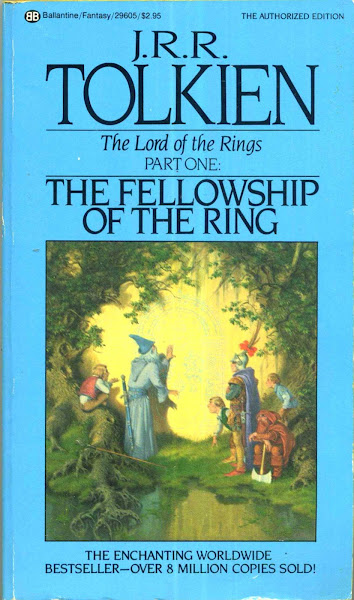
(from the third issue of Blueblood magazine. I posted this exactly one year ago in Bleachers' Brew.
I am re-posting this again in light of the Ateneo Heritage Series.)
A Woman's Touch
How the Co-educational System Changed the Ateneo
text by rick photos by aaron
“Pare… chicks!” It sounds so tacky today, but 34 years ago, the buzz at the start of the school year wasn’t if you were in the “terror” professor’s class, but the new eye candy that sashayed down the corridor.
After one hundred fourteen years, the Ateneo De Manila, all-male enclave of Jesuit pride finally opened its hallowed doors to the female of the species thereby changing the university forever.
Fr. Bienvenido Nebres who was the Dean of the College of Arts and Sciences tells of a male student who a few weeks into new school year visited him in his office. The student greeted Fr. Nebres then plopped down on the seat and looked a little bewildered. “I fear that the Ateneo’s academic standards are going to go down,” said the student with all finality.
A mild crease of concern furrowed on the Dean’s forehead as he gently prodded, “Why do you say that?”
“You see, Father,” answered the student who had come up from Ateneo’s grade and high school, “Time was during breaks or lunch, we’d (the boys) go to the library to study. Now we stay in the corridors to look at the girls.”
Time and tide
The 1960’s heralded change on a large scale. Political unrest, the Vietnam War and the Domino Theory, the Age of Aquarius, Woodstock, Pinoy rock and rhythm, and Gapo were some of the events and bywords that had stirred up a hornet’s nest of revolution. In the Ateneo, there was the rapid move towards the Filipinization of the university. It was thought then that the students were seeing less of the Jesuits (if that was the case during those years then one wonders what they can say of today). If the students, in a reflection of the times insisted on wearing their hair long, the school administration stood pat on cutting them short.
But perhaps the biggest change was the proposal to open the school to women. The University of Santo Tomas and University of the Philippines had long since opened their doors to co-education. Ateneo on the other hand was seen as the last bastion of male machismo. A sacred and exclusive boys club-slash-school where in school plays, the men played the roles meant for women. During an NCAA basketball game, students never went to the Rizal Memorial Coliseum with their dates. They sat with their classmates and professors to show support for the Blue Eagles and bunched together in case there was a rumble. 
Back in the Padre Faura days, Ateneo football players would deliberately send the ball over the walls of the Assumption if only to get a glimpse of the girls who would giggle and smile at this most subtle of flirtations. But now in the sprawling lawn of Loyola Heights (for this was during the pre-building growth of today), the male students no longer had to resort to such tactics and histrionics. If the mountain would not go to Mohammed, the women were coming to Loyola.
Swept away
Twice during the 1960’s, the school failed to garner the majority vote to allow the women into Ateneo, but by 1972, the college faculty, supposedly made up of the more conservative and older generation, insisted that the school catch up with the modern times. The college set-up then had an Academic Council made up of professors and student leaders voted 32-0 (with two abstentions) to approval the proposal that was ratified by the University Senate (which was composed of the Deans and the more senior professors as well as school officials).
There were three questions that had to be answered for the university to opens its portals to women:
Would the Ateneo make a better contribution to national development by accepting women students?
Would such a policy of co-education contribute to the educational experience of both men and women?
Would such a policy have a significant effect on the future of the university?
Even during the previous two voting sessions, the three concerns were answered with a resounding “yes.”
“What took it such a long time to pass,” recalls Fr. Nebres “was facility and curriculum-wise, we weren’t ready. There were a lot of learning curves for all involved. Take for example sports, how do you integrate the women into the program? How do you teach taekwondo to women? Do we have the right personnel to train them? Of course today that’s a common occurrence, but then it was a challenge. And facility-wise, there were no women’s bathrooms or lounges. Much work had to be done. By 1973, we felt we were ready.” 
Fr. Bert Ampil, S.J., who was the Assistant Dean and also the Head of the Communication Arts Department back then looks back and says that there were other reasons for admitting females into the Ateneo. “For one,” he laughs, “you had to look at the financial aspect. Two, student activism wasn’t confined to males. There were a great many leaders who were women and they were at the forefront of change. So if they could affect society through their efforts why not let them contribute through the school as well? And that leads me to the third reason which is all about ‘going down from the hill.’ It was hard to live up to that creed when we were being selective in its application.”
Agents of change
In the first issue of the Guidon of school year 1973-74, dated August 31, the editorial box without fanfare contained a few curious entries: Agnes Gomez, Assistant Features Editor and feature writers Margarita Logarta and Marie Irene Dominguez.
Almost immediately, women made their presence felt throughout the college from the classroom (there were a number of them who immediately made the Dean’s List) to the Council of Presidents. And the following year in athletics. The first ever women’s basketball team, then called "the Blue Eaglettes" were formed to compete in the WNCAA.
But it wasn’t as smooth a transition for the 127 freshmen co-eds and 35 transferees and cross enrollees (who made up 8.7% of the undergraduate population). Registration for the first semester was more than an event – it was a spectacle.
Male students jokingly volunteered for the “chicks screening committee.” The females responded by saying that “the men were stripped down of their party selves. Wala nang papel.”
One student wrote in the Guidon that it was a tense atmosphere. As much as the women were made welcome, not every student was in favor of it. Nena Rosales (nee Legaspi) was a transferee from Maryknoll College that year, and she admits that as much as there were charming men who made her feel welcome, there were others who outright hostile. One classmate, former Senator Orly Mercado would even rib her (although in a good natured manner) all the time.
Current University Director for Development Hector Guballa was a junior that year and tells of actress Nora Aunor’s harrowing experience in Ateneo. “The students had this unofficial anti-celebrity stand and as great a move it was of accepting women, when you combine that and some lingering ill sentiment about women in the Ateneo, it made for a combustible environment.”
Aunor enrolled as a non-credit student since being enrolled full-time meant a conflict with her showbiz duties. There were times when she’d come straight from a shoot still dressed in her show garb and she would be greeted with derisive jeers of “baduy.” It got to the point where to protect the actress, the college assigned one of the campus tough guys to play bodyguard. The heckling stopped. But so did Aunor who never went back after one semester.
Many female students found adjusting to the new environment difficult. Tey Dalupan, the daughter of then-Blue Eagles’ coach Baby, scored the lack of facilities. “We needed more women’s showers and dressing rooms in Loyola Center (today called Blue Eagle Gym). Noon nga nagkagulo sa gym after one PE session and some of the girls were taking a shower when a couple of boys made the mistake of entering not knowing who was inside.”
One female student made light of the possible co-ed campus dorm by wondering if she had to apply for a gun permit.
It wasn’t only the women who had to do the adjusting. The males had their work cut out for them as well. Fr. Adolfo Dacanay S.J., who was a student in the college then, recalls that, “The boys suddenly had to comport themselves better. If we liked to wear t-shirts and maong, everyone began to wear collared shirts and act a little more ‘civilized.’”
Chito Narvasa was a freshman during the second year of the co-ed system. “Coming from an all-boys school, we were all excited,” reveals Narvasa who aside from his business has made a name for himself in local basketball circles as a coach and administrator. “That novelty soon gave way to reality where they were every inch our equal if not superior in academics.”
Fr. Ampil laughs at this yet underscores a valuable nugget at the inclusion of women in the school, “It greatly helped in the maturation process of every one. Men included.”
“After a few weeks where we had to adjust to the new environment,” confirms Rosales who aside from being a practicing lawyer is the current Vice President of the Ateneo Alumni Association, “a sense of normalcy settled everyone down.” 
Guballa adds, “We (the men) eventually figured out that as pretty as they were – and there were a lot of them – if they made it to the Ateneo, then they must be strong and smart women. They were more than just muses for intrams of the NCAA opening. They were Ateneans.”
Liza Nakpil, a self-made entrepreneur and who currently manages local rock sensations Rivermaya says that it was time of big change and that there were a lot of national and international issues that everyone was concerned about. “We all had to focus on the tasks at hand after a while. But we had to show that we belonged and we had every right to be called an Atenean as much as the men.”
Women of wonder
Today, the women are firmly entrenched not just as a sizeable portion of the student body (56% of the college population are female) but in key university administrative positions as well. The contributions of alumnae in national development, in culture and the arts, in business and in finance, in academics and even in athletics have brought the school and the country great renown.
Current University Athletics Director Ricky Palou who finished school right before the entrance of females in the Ateneo corroborates their overall contributions to the school. “If you look at our over-all standings for Season 70, it’s the women who have kept us in the hunt for the top three positions by virtue of the Lady Eagles’ second championship and the Lady Tankers’ second place finish – their best ever in school history.”
“Without a doubt, it was a wonderful move that has had a significant impact not just on the school but also in the great consciousness of the country,” pronounces Fr. Nebres. “So I guess if you were to look back at those original questions or considerations that preceded the change, I’d say that the answers are very much valid. I think that now, it’s no longer saying ‘men for others’ but ‘men and women for others.’”
On one of the walls along Xavier Hall in the college is a bronzed plaque that unless one is browsing is lost among the numerous bulletin boards and notices that line the corridor. It’s a simple plaque that records for posterity that inaugural batch of trailblazing women. Back then they had to fight for more than equality. They had to fight for acceptance in a male-dominated world and dispel stereotypes of being mere “chicks.” They were the Women of the Ateneo as they called themselves, a distinction that is lost on today’s generation of female students who identify themselves more with their batch.
And if there’s anything, they’re considered more than just eye candy. The adjectives of smart, capable, talented, and strong are very much a connotation that comes along with them.
By the numbers
The female population of the Ateneo for SY 2007-08
Current total number of students enrolled in the college: 7,730
Total number of women in the Ateneo: 4,358
1st Year – 1,400
2nd Year – 1,080
3rd Year – 927
4th Year – 928
5th Year – 23
Author's dedication: To the women of the Ateneo and to the men who made their inclusion possible.













Having been in Ateneo since Gradeschool... I can't imagine an all-boys college setting! Some of my most brilliant classmates were females!
ReplyDelete